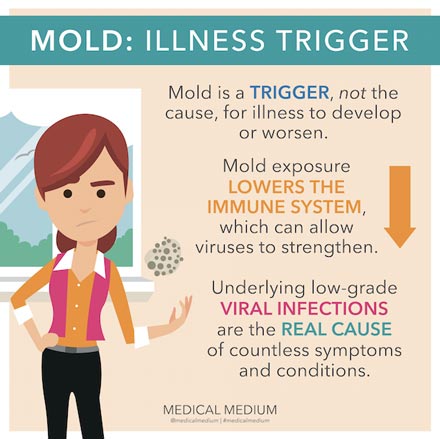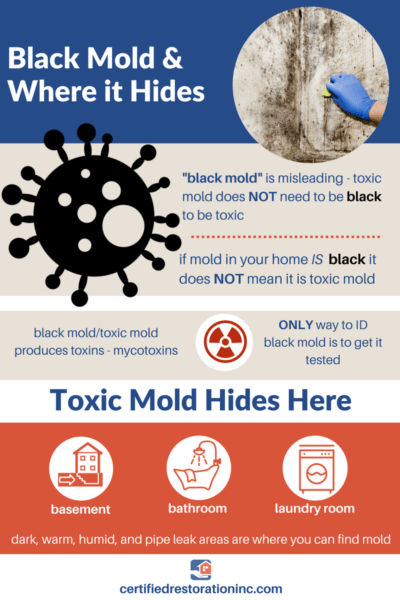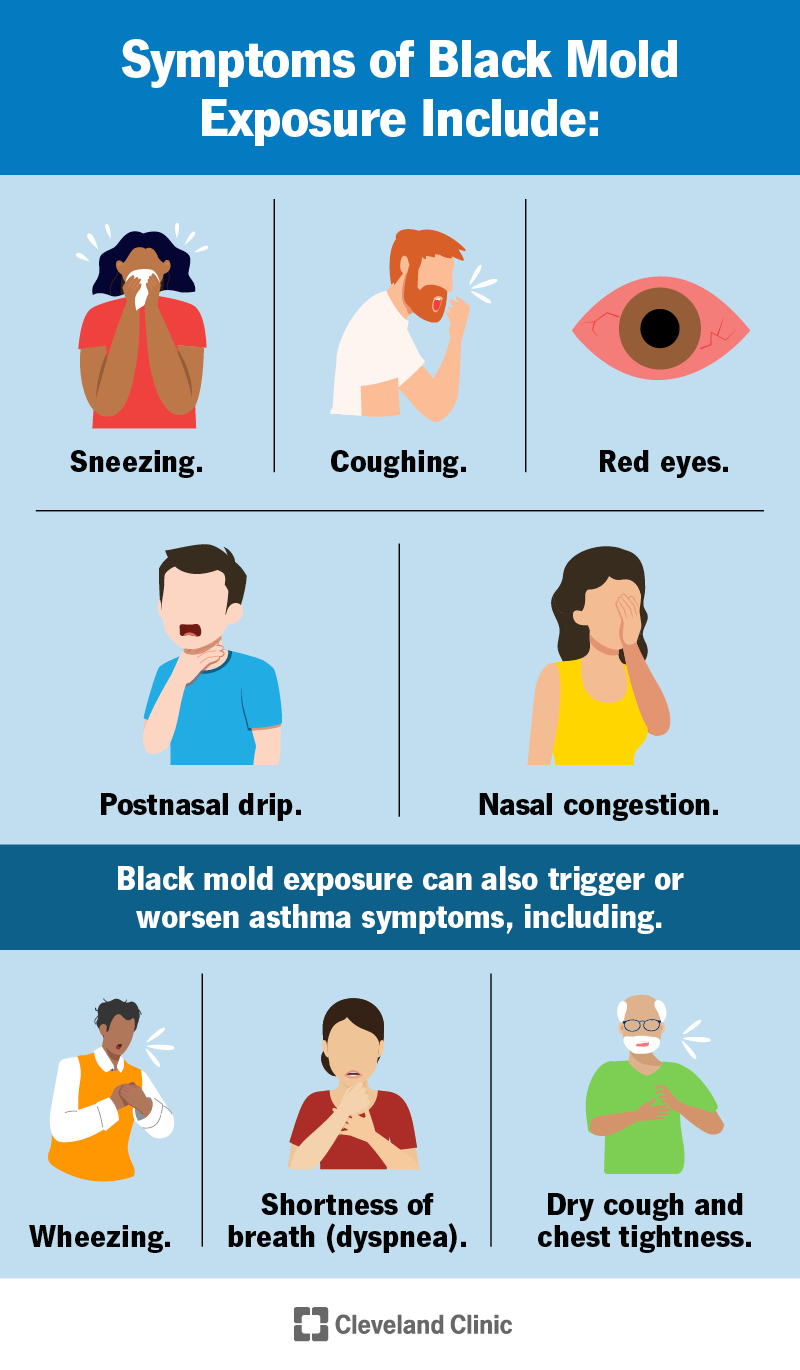In this article, you will learn about the symptoms of black mold exposure from the perspective of medical experts on WebMD. We will delve into the various signs and symptoms that can indicate exposure to black mold, including respiratory issues, allergic reactions, and skin irritation. By understanding these symptoms and their potential impact on your health, you can take the necessary steps to protect yourself and seek appropriate medical attention if needed. So, let’s explore the medical perspective on black mold exposure and empower ourselves with knowledge.
Introduction
Black mold exposure can be a serious health concern, as it has been linked to various respiratory problems, allergic reactions, and skin irritations. In this article, we will delve into the topic of black mold exposure and its effects on human health. We will also discuss how to recognize the symptoms of black mold exposure, when to seek medical advice, and the importance of preventing and addressing this issue. By understanding the medical perspective on black mold exposure, you can take necessary steps to protect yourself and your loved ones.
Understanding the Basics of Black Mold Exposure
What is Black Mold?
Black mold, scientifically known as Stachybotrys chartarum, is a type of fungus that thrives in damp and humid environments. It is characterized by its dark green or black color and a slimy texture. Black mold releases spores into the air, which can be inhaled or come into contact with the skin, leading to various health issues.
How Does Black Mold Grow?
Black mold requires moisture to grow. It can develop on any organic material that is wet or damp for an extended period, such as drywall, carpet, or wood. Common areas where black mold is found include bathrooms, basements, attics, and areas affected by water damage.
Where Does Black Mold Commonly Occur?
Black mold can be found both indoors and outdoors. Indoors, it often grows in areas with high humidity or water leakage, such as bathrooms, kitchens, and laundry rooms. Outdoors, it thrives in damp soil, decaying plant material, and areas with water damage, such as after a flood or heavy rain.
Effects of Black Mold Exposure on Human Health
Respiratory Problems
One of the most common effects of black mold exposure is respiratory problems. When black mold spores are inhaled, they can cause irritation and inflammation in the airways, leading to symptoms such as coughing, wheezing, and difficulty breathing. Individuals with pre-existing respiratory conditions, like asthma, may experience exacerbation of their symptoms.
Allergic Reactions
Black mold can trigger allergic reactions in some individuals. When the immune system reacts to black mold spores, it releases histamines, which can lead to symptoms like sneezing, runny nose, itchy and watery eyes, and throat irritation. These allergic reactions can be particularly troublesome for individuals with allergies or asthma.
Skin Irritations
Contact with black mold can cause skin irritations in some cases. Direct exposure to the mold can lead to rashes, itchiness, and redness. These skin irritations may occur in individuals who are particularly sensitive to mold or have a compromised immune system.
Recognizing the Symptoms of Black Mold Exposure
Respiratory Symptoms
If you have been exposed to black mold, you may experience various respiratory symptoms. These can include persistent coughing, wheezing, shortness of breath, and chest tightness. These symptoms may worsen when you are in a mold-infested environment or after cleaning or disturbing moldy materials.
Sinus Issues and Congestion
Black mold exposure can also lead to sinus issues and congestion. You may experience a stuffy or runny nose, sinus headaches, facial pressure, and frequent sinus infections. These symptoms may resemble those of a common cold or allergies, but if they persist or worsen, it could be a sign of black mold exposure.
Fatigue and Weakness
Feeling constantly fatigued and weak can be a result of black mold exposure. Exposure to mold toxins can affect the immune system and lead to chronic fatigue. If you find yourself often tired, lacking energy, and experiencing muscle weakness, it is important to consider black mold exposure as a possible cause.

Seeking Medical Advice for Black Mold Exposure
When to Consult a Doctor
If you suspect that you have been exposed to black mold and are experiencing persistent or worsening symptoms, it is important to consult a doctor. A healthcare professional can evaluate your symptoms, review your medical history, and recommend appropriate diagnostic procedures or treatments.
Diagnostic Procedures
To determine if your symptoms are related to black mold exposure, a doctor may perform certain diagnostic procedures. These can include a physical examination, a review of your medical history, and allergy testing. In some cases, imaging tests such as chest X-rays or a computed tomography (CT) scan may be used to assess the respiratory system.
Treatment Options
The treatment for black mold exposure depends on the severity of your symptoms and their impact on your health. Your doctor may recommend medications such as nasal sprays, antihistamines, or bronchodilators to help manage respiratory symptoms or allergic reactions. In severe cases, where black mold exposure has led to significant respiratory issues, additional treatments such as oxygen therapy or inhalers may be necessary.
Preventing Black Mold Exposure
Maintaining Proper Ventilation
To prevent black mold growth, it is crucial to maintain proper ventilation in your home or workplace. Ensure that there is adequate airflow in areas such as the bathroom, kitchen, and basement by using exhaust fans or opening windows. Proper ventilation helps to reduce moisture levels and prevent the buildup of condensation, creating an environment that is less favorable for black mold growth.
Controlling Humidity Levels
Black mold thrives in moist environments, so it is important to control humidity levels in your home. Use dehumidifiers in areas prone to excessive moisture, such as basements or laundry rooms. Additionally, fix any leaks or water damage promptly, as even small amounts of moisture can contribute to black mold growth.
Regular Cleaning and Inspection
Regular cleaning and inspection of your living spaces are essential in preventing black mold exposure. Clean and dry surfaces prone to moisture regularly, such as showers, sinks, or window frames. Pay attention to hidden areas, such as behind or beneath furniture, where moisture can accumulate. If you detect any signs of black mold, such as a musty odor or visible mold growth, take immediate action to have it professionally removed.

Importance of Professional Black Mold Removal
Dangers of DIY Removal
While it might be tempting to tackle black mold removal yourself, it is important to understand the risks involved. Disturbing mold can release a large number of spores into the air, increasing the risk of inhalation and further exposure. Moreover, improper removal techniques may spread the mold to other areas of your home or worsen the contamination.
Benefits of Professional Remediation
Hiring professionals for black mold remediation offers several benefits. They have the expertise and equipment to safely remove mold without causing dispersal or further contamination. Additionally, professionals can identify the root cause of the mold growth and take measures to prevent its recurrence. Investing in professional remediation ensures a thorough and effective removal process, providing you with peace of mind and a safe living environment.
Ensuring a Safe Living Environment
Addressing black mold exposure is crucial for your health and well-being. By seeking professional removal services, you can ensure that your living environment is free from black mold and its associated health risks. A safe and mold-free environment promotes better respiratory health, reduces the chances of allergic reactions, and improves overall quality of life.
The Role of Healthcare Providers in Black Mold Exposure
Education and Awareness
Healthcare providers play a vital role in educating individuals about the dangers of black mold exposure and the importance of prevention. They can provide information on how to identify mold, measure humidity levels, and take appropriate actions to minimize the risks. By raising awareness about this issue, healthcare providers can empower individuals to protect themselves and their families.
Treatment and Support
In cases of black mold exposure, healthcare providers can offer medical treatment and support. They can assess the extent of health issues related to mold exposure, prescribe appropriate medications, and provide guidance on managing symptoms. Additionally, healthcare providers can offer psychological support, as the impact of black mold exposure can extend beyond physical health.
Collaboration with Other Professionals
Healthcare providers may collaborate with other professionals to ensure comprehensive care for individuals exposed to black mold. This can include working with environmental specialists to identify the presence of mold in a patient’s living environment and coordinating with remediation experts for safe and effective mold removal. By collaborating with other professionals, healthcare providers can address all aspects of black mold exposure and its potential impact on health.

Common Misconceptions About Black Mold Exposure
Toxicity Levels and Health Risks
One common misconception about black mold exposure is that all molds are highly toxic and pose severe health risks. While it is true that some molds produce mycotoxins, which can be harmful when inhaled or ingested, not all black mold strains are inherently toxic. However, it is important to remember that even non-toxic mold can still cause respiratory problems and allergic reactions in susceptible individuals.
Misdiagnosis and Lack of Understanding
Black mold exposure is often misdiagnosed or overlooked due to its wide range of symptoms, which can resemble other respiratory conditions or allergies. The lack of understanding about the potential health effects of black mold exposure can lead to delayed treatment or incorrect diagnoses. Therefore, it is important to seek medical advice if you suspect black mold exposure as a possible cause of your symptoms.
Overcoming Stigmas
There can be stigmas associated with black mold exposure, causing individuals to downplay or dismiss their symptoms. Some people may fear the financial and logistical implications of addressing black mold in their homes, leading them to ignore or minimize the problem. Overcoming these stigmas requires education, awareness, and the understanding that black mold exposure is a legitimate health concern that should be taken seriously.
Conclusion
Understanding the medical perspective on black mold exposure is crucial for recognizing and addressing its symptoms. Black mold exposure can lead to various respiratory problems, allergic reactions, and skin irritations. If you suspect black mold exposure and experience persistent or worsening symptoms, it is important to consult a doctor for proper diagnosis and treatment. Prevention measures, such as maintaining proper ventilation, controlling humidity levels, and regular cleaning, can help minimize the risk of black mold growth. Professional remediation is highly recommended for effective and safe removal of black mold. Healthcare providers play a vital role in educating individuals, providing medical treatment and support, and collaborating with other professionals to ensure comprehensive care. By overcoming misconceptions and stigmas associated with black mold exposure, we can create safer living environments and improve overall health and well-being.

